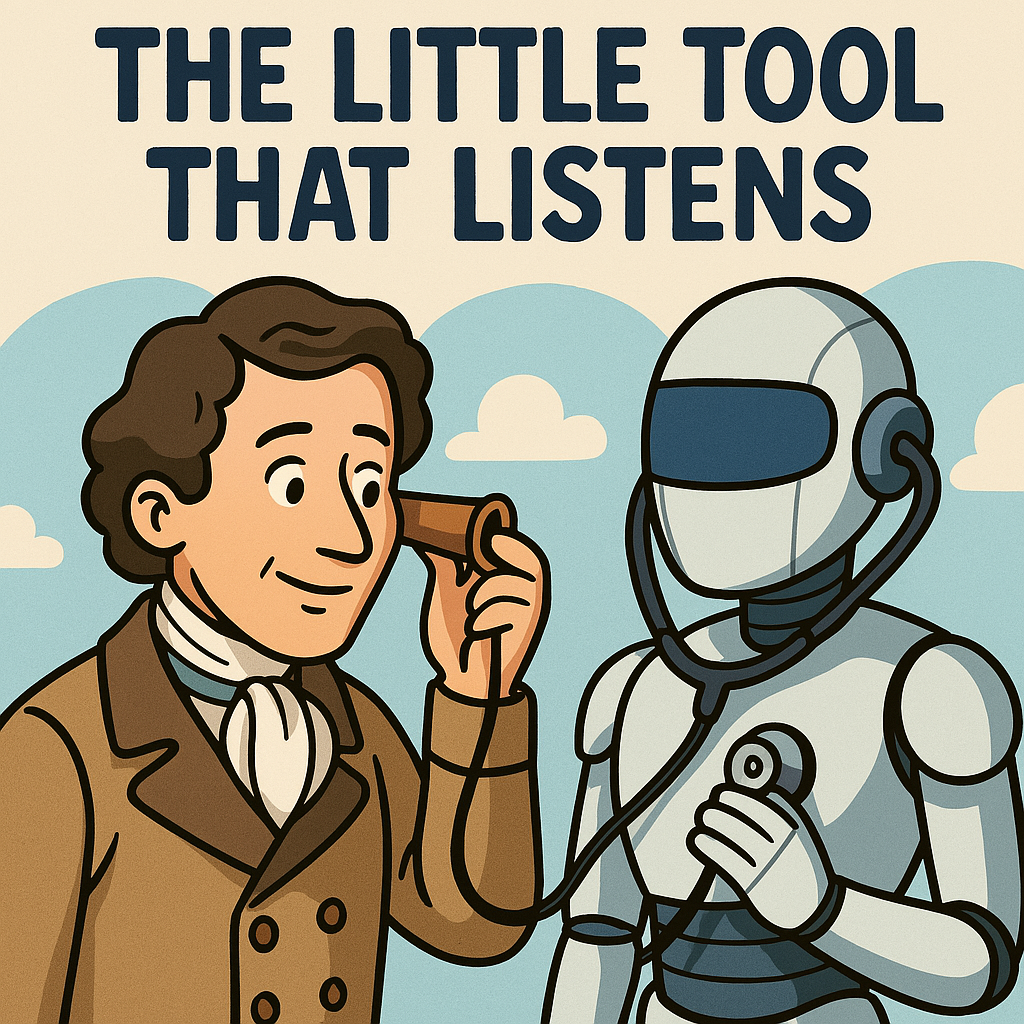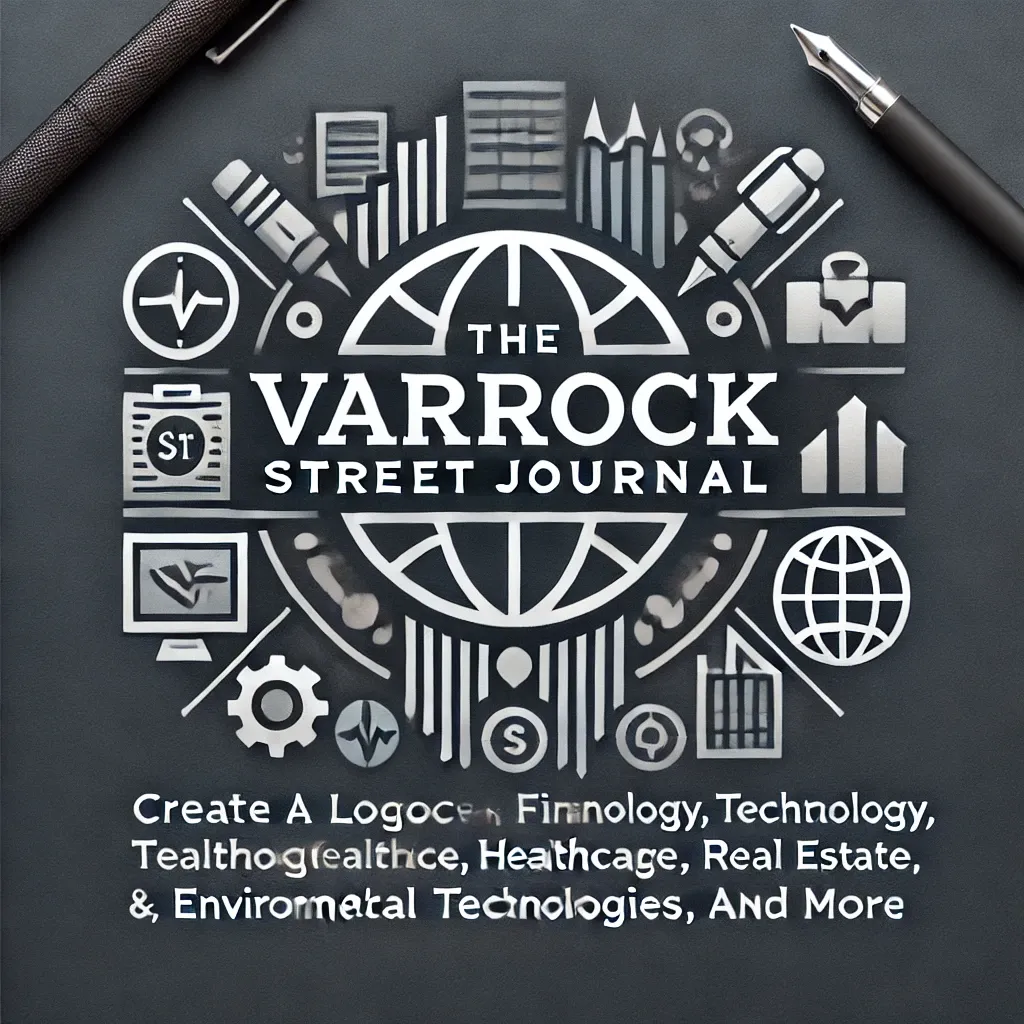🩺 “The Little Tool That Listens: A Journey Through the History of the Stethoscope”

Medical History | The Varrock Street Journal
Good morning, readers! Whether you've seen one slung around a doctor's neck or used one in science class, the stethoscope is one of the most iconic tools in medicine. But have you ever stopped to wonder where it came from—and how it became a symbol of healthcare?
Today, we’re diving into the fascinating history of the stethoscope: from a rolled-up piece of paper in 19th-century France to the digital auscultation devices we see today. This humble instrument has changed how we hear—and understand—the human body.

🔊 Before the Stethoscope: Putting an Ear to the Chest
In the early days of medicine, physicians practiced immediate auscultation—literally placing their ear directly on a patient’s chest to listen to the heart and lungs. While effective in some cases, it was uncomfortable, especially when examining women or those with infectious conditions. Doctors needed a way to listen without getting quite so close.
🧠 A Simple Invention with Profound Impact
In 1816, French physician René Laennec was examining a young woman with heart disease. Feeling awkward about placing his ear on her chest, he rolled up a piece of paper and used it as a listening tube. To his surprise, the sound was clearer than direct contact.
This sparked the invention of the first stethoscope—a wooden, trumpet-shaped tube about 30 cm long. He named the practice “mediate auscultation,” and just like that, the stethoscope was born.

🛠️ The Stethoscope Evolves
Over the next two centuries, the stethoscope underwent several redesigns:
- 1850s – The binaural stethoscope was introduced with flexible tubing and two earpieces, closer to what we know today.
- 1960s – Dr. David Littmann, a Harvard cardiologist, developed a lighter, more acoustically precise model. The Littmann stethoscope remains a gold standard in medicine.
- 2000s–Present – Electronic stethoscopes with amplification, noise reduction, and even Bluetooth connectivity have entered clinical use, improving diagnostics in noisy environments or for hearing-impaired clinicians.
🩺 What Do Stethoscopes Actually Hear?
Stethoscopes are used to assess:
- Heart sounds: rhythm, murmurs, clicks, and gallops
- Lung sounds: wheezes, crackles, or absence of breath sounds
- Bowel sounds: gurgling or silence in the abdomen
- Blood flow: using a bell to hear bruits (turbulent flow in arteries)
Despite advancements in imaging and lab diagnostics, auscultation remains a fast, non-invasive, and cost-effective way to gather valuable information.
🧠 Why This Matters
The stethoscope isn’t just a diagnostic tool—it’s a symbol of medicine itself. It represents listening, connection, and care. Even as technology advances, the stethoscope reminds us of the importance of the doctor-patient relationship, and the value of hands-on, ears-open medicine.
🌟 Spotlight on the Future
The stethoscope continues to evolve alongside modern medicine:
- Digital stethoscopes can record, visualize, and store sound data.
- AI-assisted analysis may soon help identify abnormal heart or lung sounds automatically.
- Remote auscultation is being integrated into telemedicine platforms—bridging physical distance in patient care.
These tools are expanding access to care while maintaining the tactile, human-centered core of clinical practice.
😲 Did You Know?
- The name “stethoscope” comes from the Greek stethos (chest) and skopein (to look or examine).
- Laennec's original stethoscope was monaural (used with one ear) and made of wood.
- Some advanced digital stethoscopes can now detect faint heart murmurs missed by the human ear.
Here is a video over the history in case you want to learn more!
🧠 Reflection Questions
- What does the stethoscope symbolize to you in a healthcare setting?
- Could advanced tech one day replace the stethoscope, or will it always have a place in medicine?
- How has listening—literally and metaphorically—shaped your own view of what healthcare should be?
👋 Final Thoughts
From a paper tube in 1816 to smart stethoscopes powered by AI, this instrument has quietly shaped medicine through the centuries. And no matter how far technology takes us, listening will always be one of our most powerful tools.
📚 References
Duffin, J. (2021). A history of the stethoscope. Canadian Medical Association Journal, 193(7), E231–E232. https://doi.org/10.1503/cmaj.2020-1421
Littmann, D. (1963). New stethoscope for better auscultatory performance. Journal of the American Medical Association, 185(9), 814–817.
Smith, D. (2023). The evolution of the stethoscope: From Laennec to the digital age. Journal of Medical Devices, 17(2), 45–51.
Sterne, J. (2006). The audible past: Cultural origins of sound reproduction. Canadian Medical Association Journal, 175(6), 620. https://doi.org/10.1503/cmaj.060887
📲 Keep listening, keep learning:
- Instagram: @thevarrockstreetjournal
- TikTok: @varrock.street.jo
